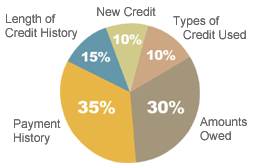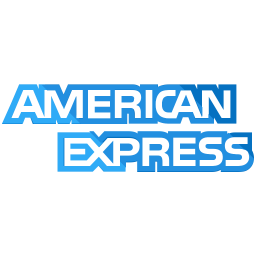Building good credit can feel like a battle. Some of you don’t have a history of credit, you as a “risky borrower” and as a result, you’re not able to get credit and prove them wrong. It’s a vicious cycle.
It’s important to understand the differences between these two loans and which one makes the most sense for you. What is the difference between a credit builder loan and a personal loan? There are a few differences between credit builder loans and personal loans — interest rates, approval process, which financial institutions offer them and more — but the biggest difference is when you get the money.
Credit builder loans have one purpose and that is to help build your credit. Because of that, the loan process is different. Instead of receiving a sum of money at the beginning and then paying it back throughout the loan term, credit builder borrowers pay the loan first and then receive the money at the end.
A lot of loans (student loans, mortgage loans and personal loans) give borrowers the money at the beginning. By flipping the process, credit builder loans offer some unique advantages like lower interest rates, no credit score requirements and a good amount of savings at the end.
If you’re trying to build (or rebuild) your credit history, a credit builder loan is a great option. Some credit unions or other financial institutions will call them share-secured loans or CD-secured loans.
The borrower begins making small monthly payments for a predetermined amount of time. Loan terms can be as short as six months or as long as six years. Once the loan balance reaches zero, the service provider unlocks the CD in which the money has been stored and returns the total money the borrower paid. At that time, minus any interest and administrative fees. The lender sets aside a set amount of money in a Certificate of Deposit (CD) that’s equal to the loan amount. Since it’s an installment loan, you make monthly payments to pay down the loan balance. Once you’ve paid off the loan, the money in the CD unlocks and comes back to you.
The application process for credit builder loans varies based on the lender, but is usually pretty straightforward. You’ll typically need a bank account, debit card or prepaid card and proof of identity. This normally involves a credit check. If you don’t have credit, many lenders will work with you to confirm your identity in a different way. Some lenders, for instance, will use ChexSystems instead, which is a nationwide specialty consumer reporting agency under the Federal Fair Credit Reporting Act. Sometimes, the lender will ask security questions to verify your identity.
Credit builder loans do not require good or great credit for approval, but proof of income is sometimes still required. Personal loans emphasize good to excellent credit as well as proof of income. You can still qualify for a personal loan with bad credit, but the interest rate may be much higher and chances of approval decrease. Often easier to get approved for a credit builder loan with favorable terms than it is to get approved for a personal loan with favorable terms, especially if you have bad credit or none at all.
As with most loans, interest rates vary for credit builder loans, some say borrowers have a better chance of securing a lower rate with a credit builder loan, especially since the loan amounts tend to be smaller. A Credit builder loan interest rates are typically lower than 10%, but, these rates can be higher depending on the lender and applicant’s eligibility. A credit-builder loan is secured, so there’s a better chance for a lower rate. Credit builder loans offer unique advantages. Here are some pros and cons of using a credit builder loan.
Personal loans are unsecured loans, which means that they are not connected to a physical object like a car loan or mortgage loan. The lender does not have access to collateral if the borrower were to default (not pay) on the loan. As a result, personal loans tend to have higher interest rates.
Sometimes it’s possible to get a personal loan when your credit score is 500 or 600, but its much harder in general. If you have high income, there is a better chance of getting approved for a personal loan aside from having bad credit. Additionally, there are lenders who specialize in offering personal loans to consumers with bad credit. So you can try to compensate for bad credit by finding a lender willing to take a risk or by banking on income carrying the application.”
Interest rates
But even though you might qualify for a personal loan, it might not make sense to move forward with it. Interest rates for personal loans can fluctuate drastically based on the applicant’s creditworthiness.
In order to make sure you get the best terms, it’s smart to compare different lenders. You can apply online and get pre-qualified in a few minutes.
Personal loans have unique advantages and disadvantages. Yes, its Quick and easy, personal loans are easy to get. Plus, you’ll usually get the money fast. You can use personal loans for anything. Build credit history: Like credit builder loans, if you make your payments on time and in full each month, you can usually build credit history by paying back personal loans. Be sure to ask the lender whether they report payment history to the credit bureaus.
Even though personal loans have benefits, there are also negative aspects that you should be aware of. Interest rates can range from 5% for borrowers with excellent credit to 36% for borrowers with poor credit. If you’re trying to build credit with a personal loan, you’ll probably get a high interest rate, which means more money out of your pocket. Bad habits: Personal loans give flexibility but if you aren’t disciplined they could lead to more financial challenges. Credit history: Borrowers must have credit history in order to qualify. For people without a history of credit, this might be a dealbreaker. And in the case of “payday” or “title” loans, your interest rate could be closer to 300% or more




